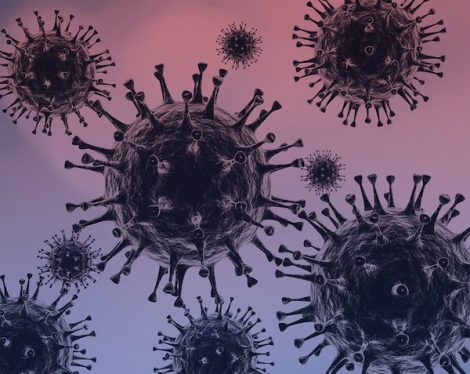Maintaining efforts to fight animal diseases in times of COVID-19

As the world faces the consequences of the COVID-19 pandemic, the OIE calls countries to continue to implement prevention and control measures for animal diseases. Sustaining veterinary activities is essential to avoid the detrimental impacts of animal diseases, which could exacerbate the current sanitary and socio-economic crises. The main conclusions of the OIE report on the global animal health situation are presented.
Dr Paula Caceres, Head of the OIE World Animal Health Information and Analysis Department (WAHIAD),
presents the main conclusions of the OIE annual report on the global animal health situation.
Paris, 19 June 2020 – Despite the devastating impacts of COVID-19, which have led to global movement restrictions, animal diseases continue to spread worldwide. Transboundary animal diseases severely affect animal health and welfare, as well as the livelihoods from thousands of families. These diseases pose a serious threat to global food security when widely disseminated and put at risk the animal production systems.
Today, the OIE publishes its annual report1 on the global animal health situation, drawing the attention towards animal diseases for which epidemic situations were observed in 2019 and 2020, as well as to other diseases with global control or eradication strategies in place. Amid the COVID-19 pandemic, countries are called to maintain their efforts to preserve animal health and welfare. In this regard, recommendations are provided in the report to help national Veterinary Services implement effective surveillance, reporting and control measures. Sustaining these activities is key in the current situation.
Curbing the impact of animal disease epidemics
Several factors have contributed to the spread of transboudary animal diseases in the recent years leading to epidemic situations, many of which still persist.
A worldwide increase of African swine fever (ASF) cases has been observed over the last year. One of the biggest challenges of controlling this deadly pig disease is the absence of an effective vaccine. ASF was reported by 28% of OIE Members (42 of the 150 reporting countries and territories) distributed across most OIE regions. In a short period of time, the disease has triggered a major crisis in the pork industry, causing massive pig losses, detrimental socioeconomic impacts, and even threatening to disrupt the world’s supply chain of pork and other pig subproducts.
In response to this global threat, the OIE has been working alongside its Members and the UN Food and Agriculture Organization (FAO) to implement regional initiatives for a coordinated response, in the framework of the Global Framework for the Progressive Control of Transboundary Animal Diseases (GF-TADs). These efforts have contributed to increase the number of countries implementing surveillance and control measures for ASF over the years, reaching 90% of reporting countries in 2018-2019 (175/194). Countries are called upon to continue to implement relevant measures and to report ASF outbreaks in a timely manner through the World Animal Health Information System of the OIE (WAHIS).
Given the challenging characteristics of the disease, the response must involve coordinated actions and international cooperation. In this regard, a GF-TADs initiative for the global control of ASF is about to be launched.
Another challenge for veterinary and public health services is Highly Pathogenic Avian Influenza (HPAI). Due to its serious consequences for both livelihoods and international trade, it has been one of the most reported animal diseases in recent years. The analysis of HPAI outbreak dynamics presented in the OIE report shows an increased activity of the virus in the first months of 2020. Avian influenza strains have a potential zoonotic impact and the ability to mutate and evolve quickly. In this context, promoting transparency and understanding the global situation continue to be a priority to protect public health and to ensure a safe trade of animals and animal products.
These examples demonstrate that animal epidemics entail devastating impacts that could intensify the ongoing crisis. In times of COVID-19, countries are encouraged to maintain and reinforce their efforts to prevent and control them.
1The report presents an analysis based on the information notified by countries through the World Animal Health Information System (WAHIS).
Further information:
